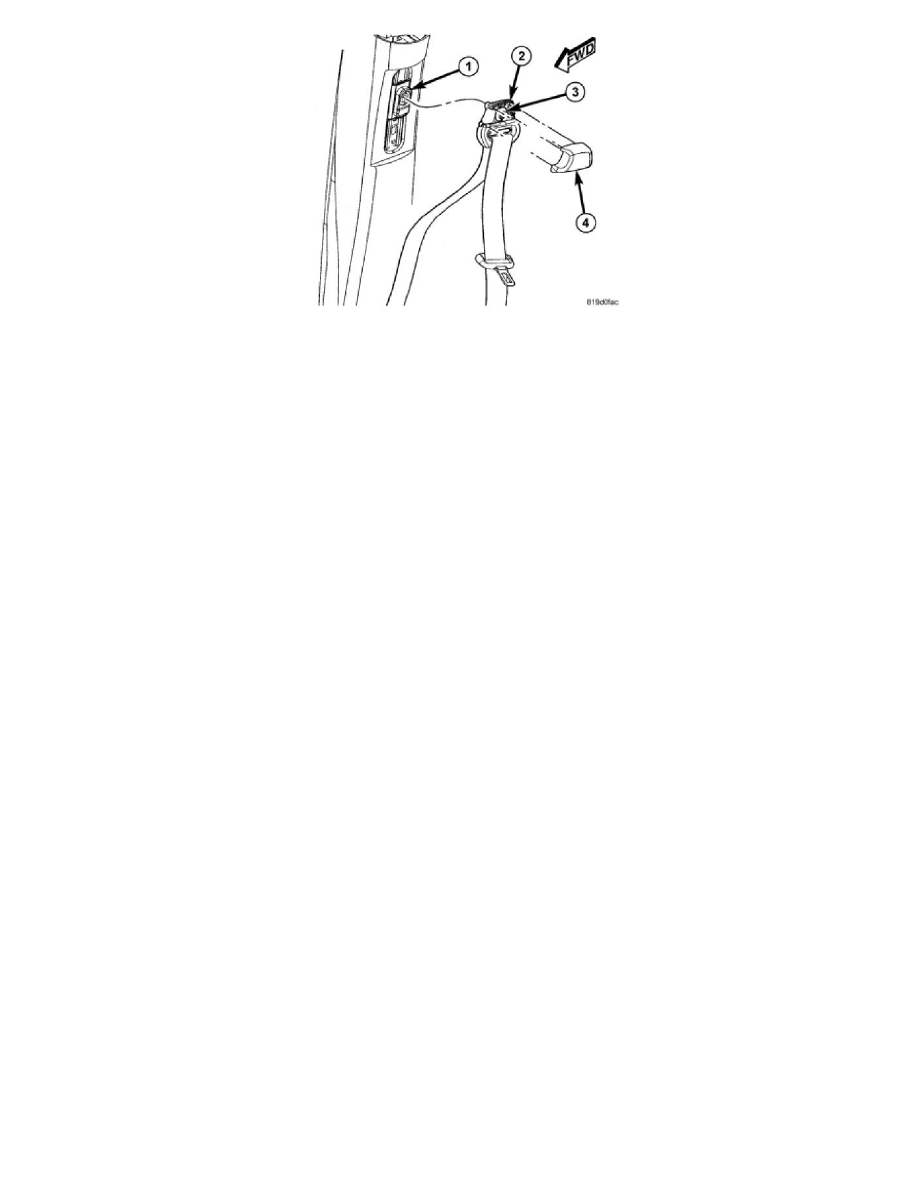Wrangler 2WD V6-3.8L (2008)

7. Position the seat belt turning loop (2) onto the height adjuster (1) on the upper sport bar. Be certain that the seat belt webbing between the retractor
and the lower anchor is not twisted.
8. Install and tighten the screw (3) that secures the turning loop to the height adjuster. Tighten the screw to 40 Nm (30 ft. lbs.).
9. Engage the upper edge of a new trim cover (4) over the top of the turning loop. Then squeeze the lower end of the trim cover and the turning loop
together firmly and evenly until the engagement tabs of the trim cover snap into the slots of the turning loop.
10. Do not reconnect the battery negative cable at this time. The supplemental restraint system verification test procedure should be performed
following service of any supplemental restraint system component. See: Powertrain Management/Computers and Control Systems/Testing and
Inspection/Diagnostic Trouble Code Tests and Associated Procedures/Verification Tests.
Front - Four Door
FRONT - FOUR DOOR
WARNING: To avoid serious or fatal injury on vehicles equipped with airbags, disable the Supplemental Restraint System (SRS) before
attempting any steering wheel, steering column, airbag, seat belt tensioner, impact sensor, or instrument panel component diagnosis or service.
Disconnect and isolate the battery negative (ground) cable, then wait two minutes for the system capacitor to discharge before performing
further diagnosis or service. This is the only sure way to disable the SRS. Failure to take the proper precautions could result in accidental
airbag deployment.
WARNING: To avoid serious or fatal injury during and following any seat belt or child restraint anchor service, carefully inspect all seat belts,
buckles, mounting hardware, retractors, tether straps, and anchors for proper installation, operation, or damage. Replace any belt that is cut,
frayed, or torn. Straighten any belt that is twisted. Tighten any loose fasteners. Replace any belt that has a damaged or ineffective buckle or
retractor. Replace any belt that has a bent or damaged latch plate or anchor plate. Replace any child restraint anchor or the unit to which the
anchor is integral that has been bent or damaged. Never attempt to repair a seat belt or child restraint component. Always replace damaged or
ineffective seat belt and child restraint components with the correct, new and unused replacement parts listed in the DaimlerChrysler
Mopar(R) Parts Catalog.
NOTE: The following procedure is for replacement of an ineffective or damaged seat belt and retractor unit. The front retractor also includes a
seat belt tensioner. If the front seat belt or retractor is ineffective or damaged, but the seat belt tensioner is not deployed, review the
recommended procedures for handling non-deployed supplemental restraints. See: Air Bag Systems/Service and Repair. If the seat belt
tensioner has been deployed, review the recommended procedures for service after a supplemental restraint deployment before removing the
unit from the vehicle. See: Repairs and Inspections Required After a Collision/Service and Repair.
NOTE: All seat belt retractors except the driver side front retractor include a switchable automatic locking mechanism. See: Seat Belt
Retractor/Description and Operation/Description.
